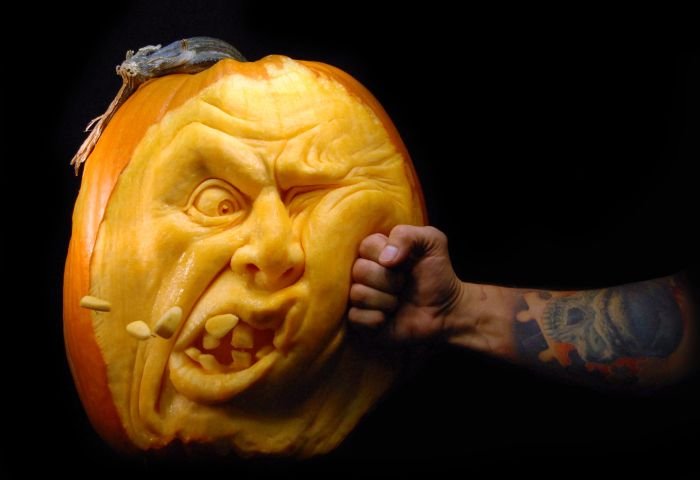|
|
Pumpkin Carving Art
|
Tradition
Throughout Ireland and Britain, there is a long tradition of carving lanterns from vegetables, particularly the turnip, mangelwurzel, or swede. The turnip has traditionally been used in Ireland and Scotland at Halloween, but immigrants to North America used the larger native pumpkin, which are both readily available and much larger – making them easier to carve than turnips. While turnips have always been used in Ireland, lanterns in Scotland were originally fashioned from the thick stem of a cabbage plant, and were called "kail-runt torches". It was not until 1837 that jack-o'-lantern appeared as a term for a carved vegetable lantern, and the carved pumpkin lantern association with Halloween is recorded in 1866.
In the United States, the carved pumpkin was first associated with the harvest season in general, long before it became an emblem of Halloween. In 1900, an article on Thanksgiving entertaining recommended a lit jack-o'-lantern as part of the festivities. The poet John Greenleaf Whittier, who was born in 1807, wrote "The Pumpkin" (1850):
“Oh!—fruit loved of boyhood!—the old days recalling,
|
|









